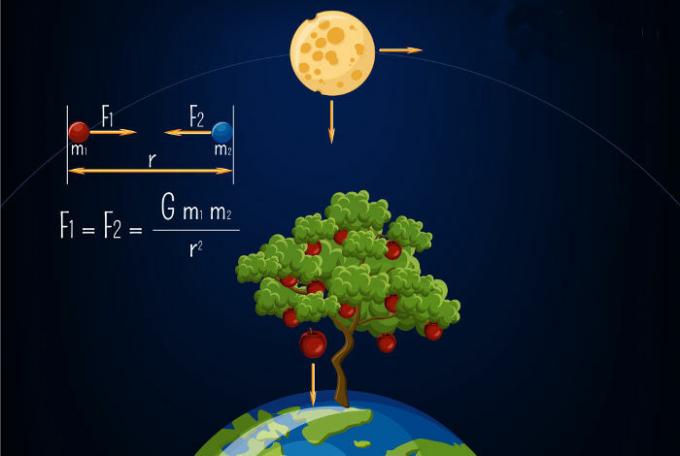Electric force is the interaction of attraction or repulsion generated between two charges due to the existence of an electric field around them.
The ability of a charge to create electrical forces was discovered and studied by French physicist Charles Augustin de Coulomb (1736-1806) in the late 18th century.
Around 1780, Coulomb created the torsion balance and with this instrument he experimentally demonstrated that the intensity of the force is directly proportional to the value of the electrical charges that interact and inversely proportional to the square of the distance that the separates.
Electric force formula
The mathematical formula, also called Coulomb's Law, which expresses the intensity of the electrical force is:
In the International System of Units (SI), the intensity of the electric force (F) is expressed in newton (N).
The terms that1 and what2 of the formula correspond to the absolute values of the electric charges, whose SI unit is coulomb (C), and the distance separating the two charges (r) is represented in meters (m).
The proportionality constant (K) depends on the medium in which the charges are inserted, for example, in a vacuum this term is called electrostatic constant (K0) and its value is 9.109 Nm2/Ç2.
Learn more aboutCoulomb's Law.
What is the electric force formula used for and how to calculate it?
The formula created by Coulomb is used to describe the intensity of the mutual interaction between two point charges. These charges are electrified bodies whose dimensions are negligible compared to the distance between them.
Electric attraction occurs between charges that have opposite signs, because the existing force is that of attraction. Electric repulsion occurs when charges of the same sign are brought together, as the repulsive force acts on them.
To calculate the electrical force the signals of electrical charges they are not taken into account, only their values. See how to calculate electrical force with the following examples.
Example 1: Two electrified particles, q1 = 3.0 x 10-6 C and q2 = 5.0 x 10-6 C, and of negligible dimensions are situated at a distance of 5 cm from each other. Determine the strength of the electrical force considering they are in a vacuum. Use electrostatic constant K0 = 9. 109 Nm2/Ç2.
Solution: To find the electrical force, the data must be applied in the formula with the same units as the electrostatic constant.
Note that the distance was given in centimeters, but the constant is meter, so the first step is to transform the distance unit.
The next step is to replace the values in the formula and calculate the electrical force.
We came to the conclusion that the intensity of the electric force acting on the charges is 54 N.
You may also be interested inelectrostatics.
Example 2: The distance between points A and B is 0.4 m and the loads Q are located at the ends1 and Q2. A third charge, Q3, was inserted at a point that is 0.1 m from Q1.
Calculate the net force on Q3 knowing that:
- Q1 = 2.0 x 10-6 Ç
- Q2 = 8.0 x 10-6 Ç
- Q3 = – 3.0 x 10-6 Ç
- K0 = 9. 109 Nm2/Ç2
Solution: The first step in solving this example is to calculate the strength of the electrical force between two charges at a time.
Let's start by calculating the force of attraction between Q1 and Q3.
Now, we calculate the force of attraction between Q3 and Q2.
If the total distance between the line is 0.4 m and Q3 is positioned 0.1 m from A, meaning that the distance between Q3 and Q2 is 0.3 m.
From the values of the forces of attraction between the loads, we can calculate the resulting force as follows:
We came to the conclusion that the resulting electric force that Q1 and Q2 exert on Q3 is 3 N.
To continue testing your knowledge, the following lists will help you:
- Coulomb's Law - Exercises
- Electric charge - Exercises
- Electrostatics - Exercises

